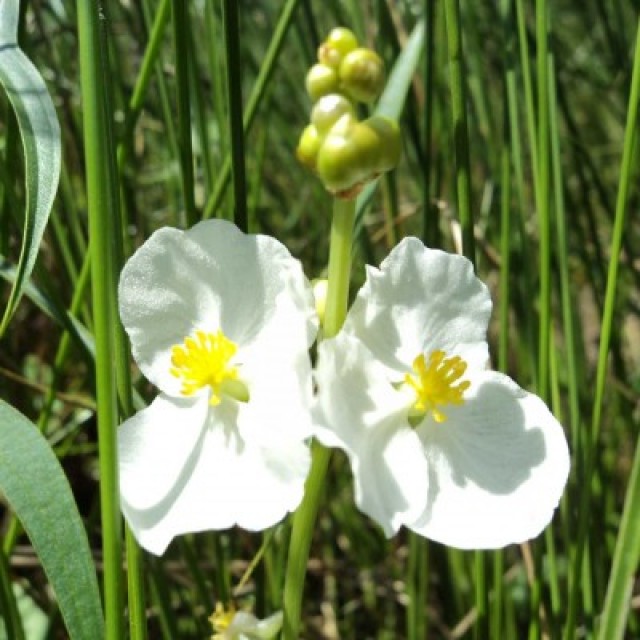COMMON NAME
Arrowhead root
SCIENTIFIC NAME
Sagittaria latifolia
ALSO KNOWN AS
Wapato, Duck Potato, Waabiziipin (Ojibwe)
Plant family
Water-plantain (Alismataceae)
Plant group
Wildflowers and Herbs
Known as waabiziipin by the Ojibwe. Grows in creeks, rivers, ditches, lakes and other places where there is shallow water.
66 reports
12+
OBSERVERS
66+
OBSERVATIONS
Identification hints
Arrowhead Root can be found along stream and river banks in intertidal mudflats and other wet areas. It is a perennial aquatic herb with distinctive succulent green arrow-shaped leaves that grow alternately from a rhizome. Each leaf grows on one stem. The whole plant can reach heights of up to 3 ft. Arrowhead flowers bloom in sets of 3 on a central stem from July through September. Each flower has three white petals up to an inch long with many stamens. Walnut-sized edible tubers develop on roots/rhizomes from the central part of the plant. These tubers contain a milky juice.
Did you know?
Arrowhead Root is an important aquatic and riparian plant. It provides cover for aquatic insects and fish, while the seeds and tubers (root structures) provide food for many species of waterfowl, songbirds, and aquatic mammals like beavers. Traditionally the over-wintering part of the rootstock, called the corm, was eaten to treat indigestion and as a source of food for the Ojibwe people.
DISTRIBUTION IN TH U.S.
There is no information available about this species.
HABITAT
There is no information available about this species.
See Menu
Budburst is a project of the
Chicago Botanic Garden
One of the treasures of the
Forest Preserves of Cook County
Creative Commons
BY-NC-SA 4.0
- 2021 Chicago Botanic Garden. All Rights Reserved.
- Terms of Use
- Privacy Policy
- Data Sharing and Citation Policies
- 2021 Chicago Botanic Garden. All Rights Reserved.



